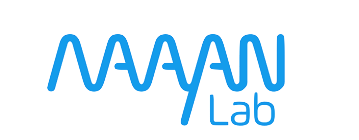Gene and Drug Landing Page Aggregator
Gene and Drug Landing Page Aggregator (GDLPA) has links to 53 gene, 18 variant and 19 drug repositories that provide direct links to gene and drug landing pages. You can search by gene or drug name and then choose the sites that contain knowledge about your gene or drug of interest. Resources supported by the NIH Common Fund are listed first and have the CFDE logo at their top right corner.
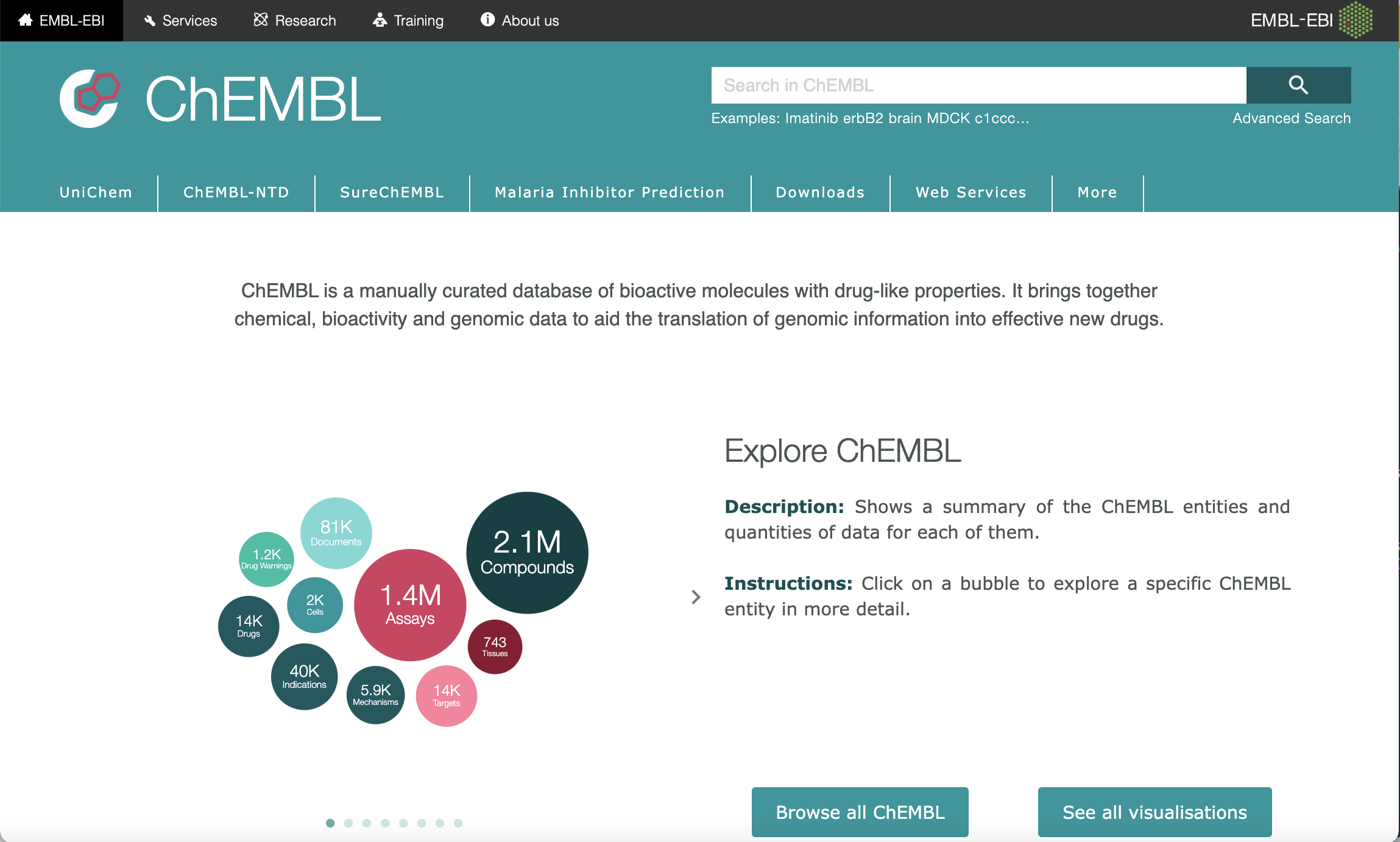
ChEMBL is a manually curated database of bioactive molecules with drug-like properties. It brings together chemical, bioactivity and genomic data to aid the translation of genomic information into effective new drugs.

DrugCentral provides information on active ingredients chemical entities, pharmaceutical products, drug mode of action, indications, pharmacologic action.
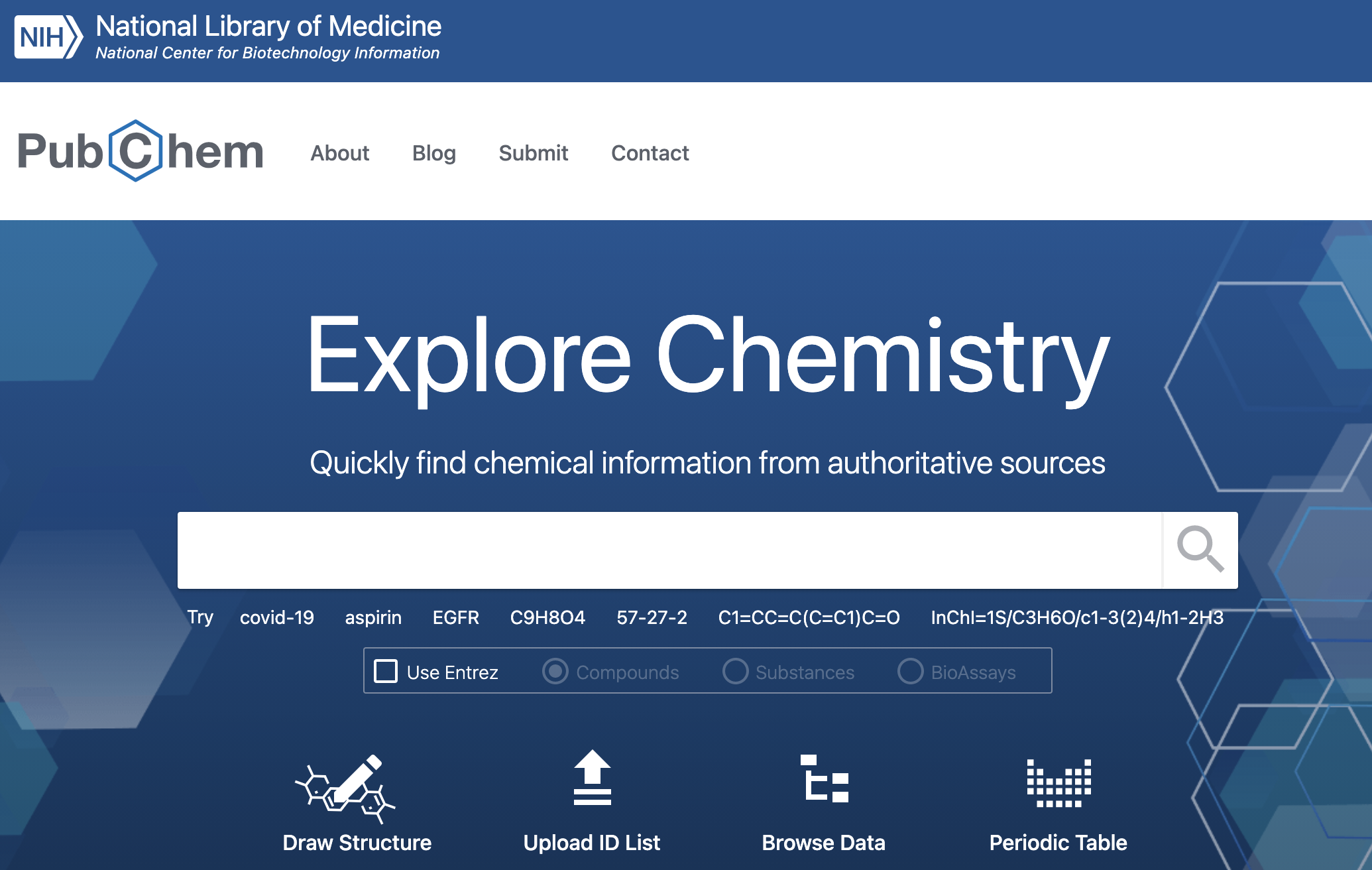
PubChem, an open chemistry database at the NIH, mostly contains small molecules, but also larger molecules such as nucleotides, carbohydrates, lipids, peptides, and chemically-modified macromolecules.

DrugEnrichr is a new drug set enrichment analysis tool.
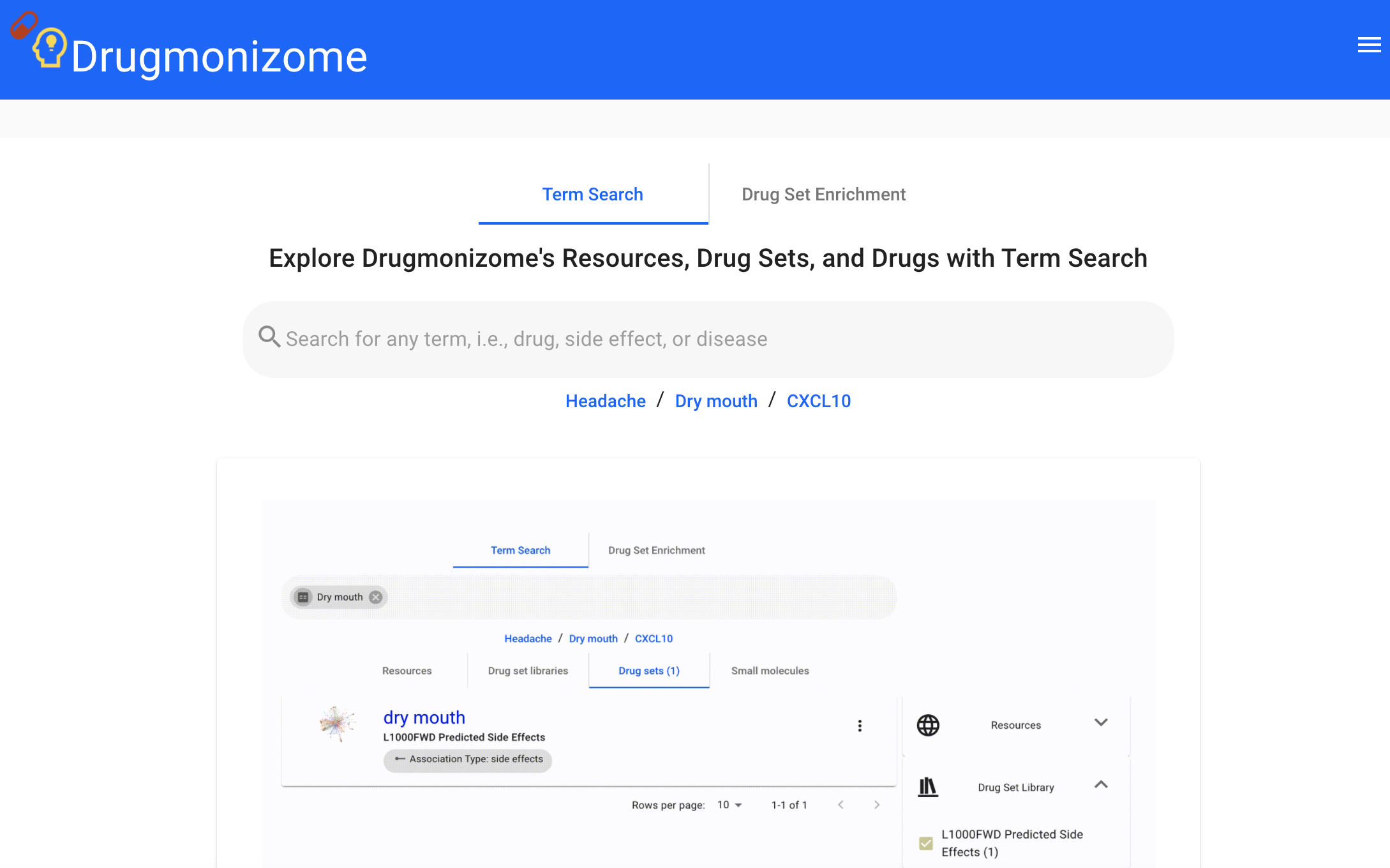
Drugmonizome is a web portal for querying sets of known drugs and computing significant biomedical terms that drugs in the set share.
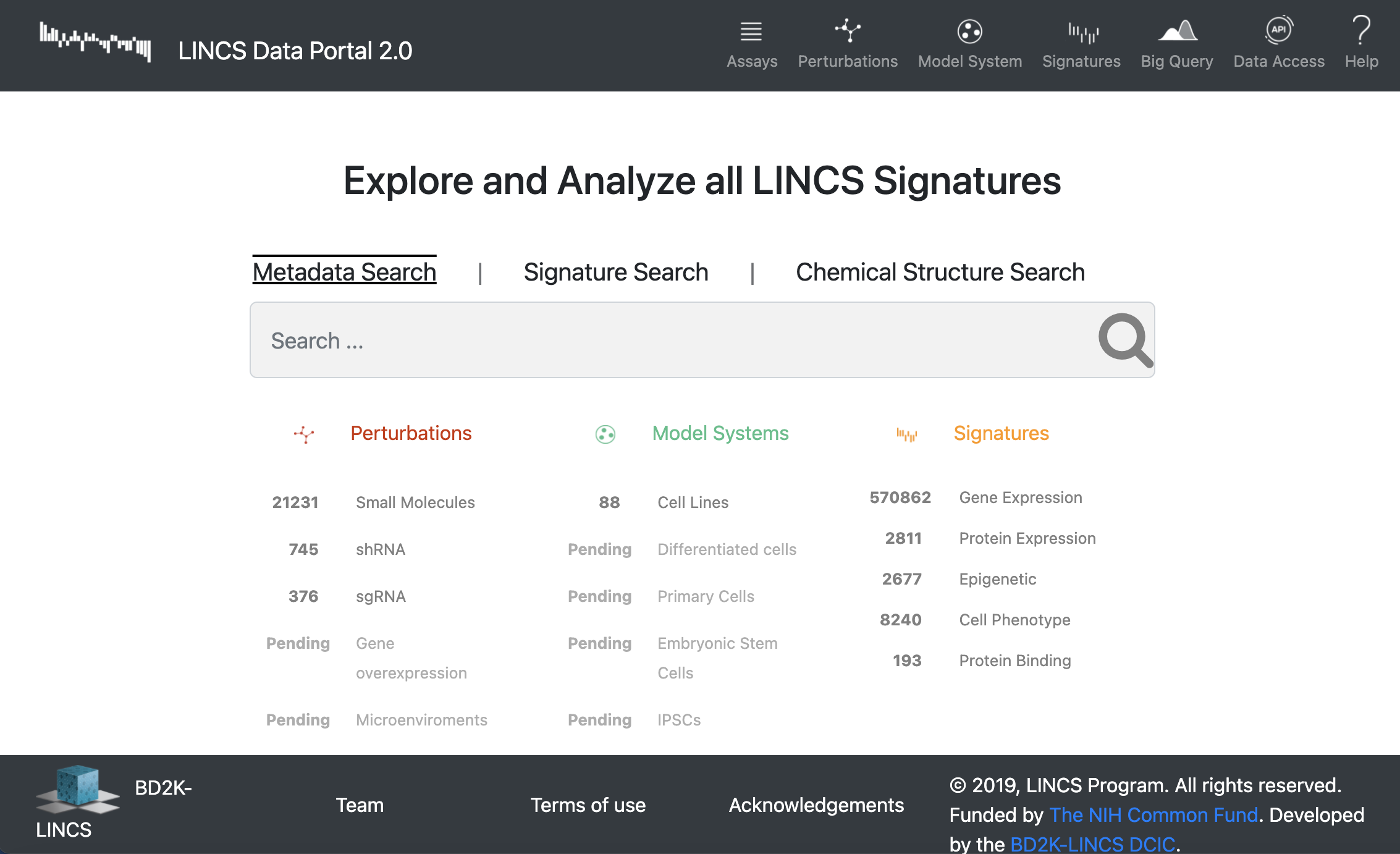
LDP 2.0 includes data about over 20,000 small molecules, including approved drugs, compounds in clinical trials, and tool-compounds. Chemical structures are searchable by substructure.

PubMed comprises more than 33 million citations for biomedical literature from MEDLINE, life science journals, and online books.
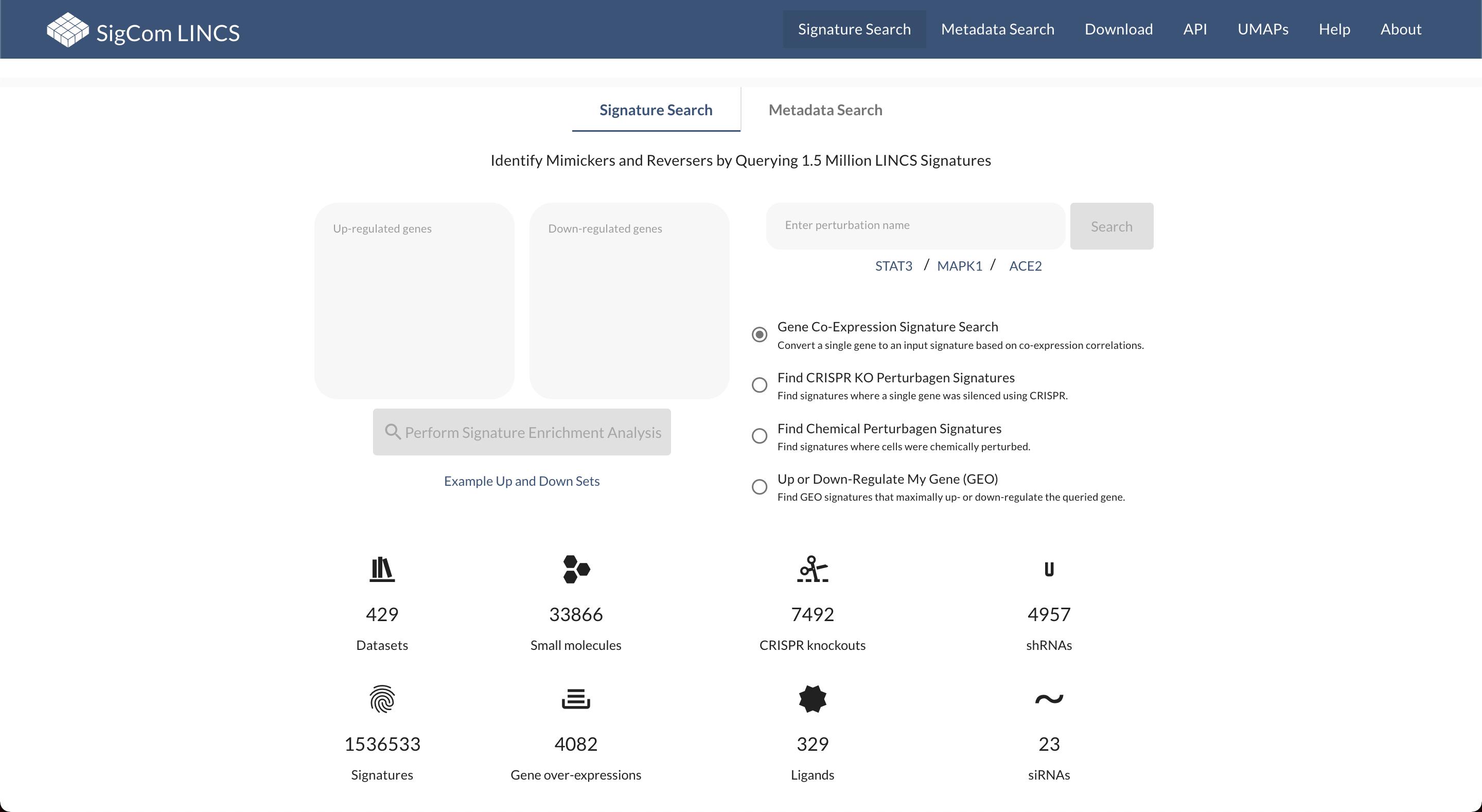
SigCom LINCS data portal serves LINCS datasets and signatures. It provides a signature similarity search to query for mimicker or reverser signatures.




